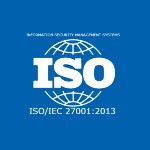How Competitive Wargaming Helps Organizations Win in Disruptive Markets
Posted by | Fuld & Company
In such an environment, competitive wargaming has re-emerged as one of the most effective tools for testing strategic resilience—by simulating competitive dynamics before they unfold.
But wargaming today is not about reenacting military tactics in a corporate setting. It’s about using structured simulation to expose blind spots, stress-test decisions, and build organizational agility.
Why Traditional Strategy Models Fall Short
Most corporate strategies are developed linearly: define the goal, analyze the market, allocate resources, execute. This approach assumes the external environment will remain stable long enough for those decisions to play out. Disruption, however, breaks those assumptions.
A competitor launches a new pricing model. A regulation shifts. A technology matures earlier than expected. Suddenly, years of planning are obsolete.
Traditional market research and forecasting help organizations understand what might happen. Competitive wargaming, by contrast, helps them understand how events could play out—and what to do when they do.
Explore Fuld’s Competitive Strategy Consulting services »
How Wargaming Works—And Why It Works
A competitive wargame is a simulation of market realities, in which cross-functional teams adopt the roles of competitors, regulators, or customers to test the impact of strategic choices.
The process typically unfolds in three stages:
- Preparation: Defining the competitive scenario, identifying key players, and collecting intelligence.
- Simulation: Teams act out the scenario, responding to moves, counter-moves, and emerging disruptions.
- Debrief: Extracting insights about competitor intent, strategic vulnerabilities, and market opportunities.
The most valuable outcome is not the specific “winner” of the simulation, but the strategic insight it produces: where assumptions fail, where competitors might surprise, and where the organization’s decision-making processes themselves need strengthening.
In industries like telecom, financial services, and healthcare, wargaming has been used to anticipate pricing battles, technology adoption curves, and regulatory responses—insights that often change the trajectory of billion-dollar decisions.
See how early warning and scenario tools enhance foresight »
A Case in Point: Anticipating the Challenger
When a global financial institution faced an emerging digital challenger, its leadership was confident in its scale advantage. A wargame simulation, however, revealed something the data alone did not: the challenger’s strategy wasn’t to compete on price, but on customer acquisition velocity—using low-cost digital onboarding and third-party partnerships.
Within hours of simulation, the team recognized that their own organizational inertia—not technology—was their biggest vulnerability. This insight led to the development of a parallel “fast-lane” onboarding program, launched ahead of the challenger’s expansion.
Months later, when the new entrant entered the market, the institution was already positioned with a counter-move that neutralized its competitive edge.
Explore more strategy case studies »
Beyond Prediction: Building Strategic Muscle
The value of competitive wargaming lies not in predicting the future, but in preparing the organization to think strategically under uncertainty.
By placing executives in simulated competitive situations, wargaming develops:
- Foresight: Seeing how small moves can cascade into major shifts.
- Empathy: Understanding how competitors and customers truly think.
- Agility: Learning to make faster, better-informed decisions when new data emerges.
This exercise builds what might be called strategic reflexes: the ability to anticipate, adapt, and act with confidence in an unpredictable landscape.
Wargaming works best when integrated with other intelligence disciplines—such as early warning systems, scenario planning, and competitive benchmarking—to ensure insights aren’t episodic, but continuous.
In disruptive markets, uncertainty is not a threat to strategy—it’s the proving ground for it. Competitive wargaming provides leaders with a rare advantage: the ability to experience the future before it arrives.
The organizations that thrive in disruption aren’t those with the best predictions—they’re the ones that have rehearsed their response.
Tags: Competitive Strategy, competitive strategy consulting, New Entrant Strategy, Scenario Planning, Strategic Planning, War Gaming



















